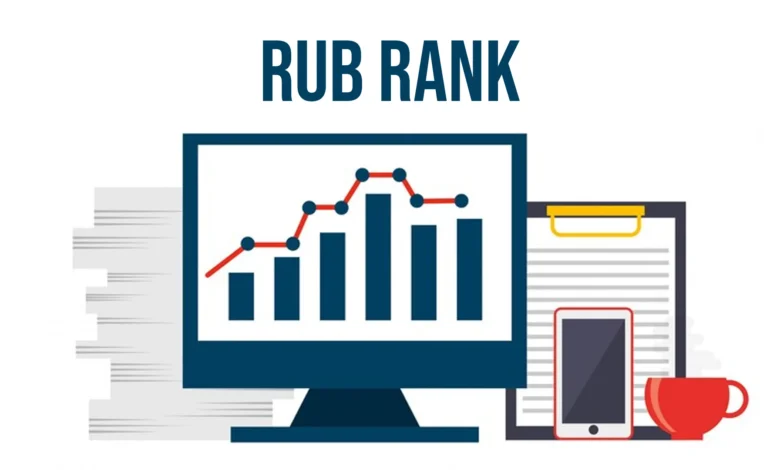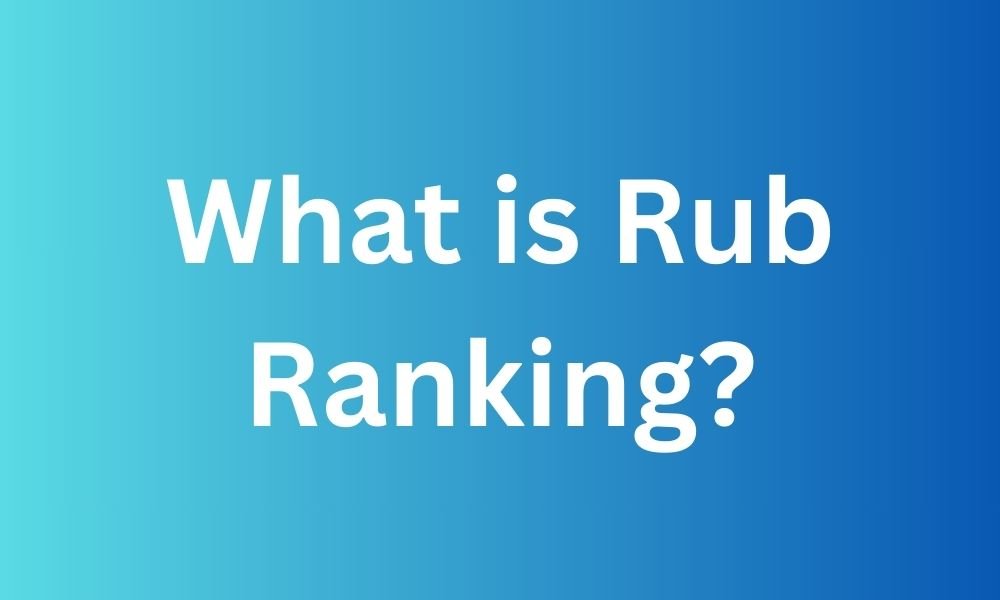
What is Rub Ranking?
Rub ranking is a systematic evaluation tool designed to assess performance across various contexts, prominently utilized in educational assessments, performance reviews, and skill demonstrations. Its primary purpose is to provide a structured framework that categorizes performance levels into distinct tiers based on predefined criteria. This categorization enables evaluators to effectively measure outcomes and ensure that assessments are both fair and comprehensive.
The origin of rub ranking can be traced back to educational practices aimed at enhancing grading transparency and consistency. Traditionally, educators relied on subjective measures to evaluate student performance, often leading to discrepancies and misunderstandings. The introduction of rubrics—essentially frameworks outlining performance expectations—led to the development of rub ranking systems. These systems provide evaluators with specific descriptors for each performance tier, which improves clarity for both the assessor and the assessed.
Rub ranking carries significant importance as it fosters objectivity in grading processes. By establishing specific criteria and performance levels, rub ranking minimizes biases that may arise from personal interpretation. This method allows for more consistent feedback, which is crucial not only in academic settings but also in professional evaluations. For instance, organizations employ rub ranking to review employee performance, ensuring that assessments are aligned with predetermined standards and expectations.
Moreover, rub ranking enhances the learning experience by making expectations transparent. Students and employees are able to understand what is required to achieve success, thus promoting self-directed improvement. This systematic approach encourages individuals to engage more deeply with the criteria set forth, enabling a clear pathway for development. In essence, rub ranking serves as a pivotal tool for evaluating performance, providing clarity, and supporting consistent feedback mechanisms across diverse evaluation environments.
The Components of Rub Ranking
Rub ranking systems are integral to various assessment processes, particularly in educational settings, as they provide a structured method for evaluating student performance. The primary components of a rub ranking system include categories, levels of achievement, and performance descriptors, which collectively foster a transparent grading framework. These elements work in tandem to facilitate a comprehensive understanding of a student’s capabilities.
Categories within a rub ranking generally break down the significant aspects of the task or subject being assessed. For instance, in a writing assignment, categories might encompass elements such as organization, content, style, and mechanics. Each category serves to focus the evaluative process, ensuring that students are assessed on all critical dimensions of their work, rather than a single aspect. This broad consideration allows for a more equitable evaluation, subsequently enhancing the reliability of the rub ranking.
Levels of achievement represent the degree to which a student meets the outlined expectations within each category. These levels are typically delineated as varying degrees of proficiency, often labeled as exemplary, proficient, developing, or insufficient. By establishing clear expectations for each level, a rub ranking system provides a clear path for students to understand where they stand in their learning journey and how they can improve.
Performance descriptors accompany these levels, offering explicit criteria that describe what each level looks like in practice. These descriptors enable both students and educators to cultivate a shared understanding of the standards required for each achievement level. When combined, these components of rub ranking not only enhance fairness but also empower students by providing clarity and direction for their academic improvement. The adaptability of this framework across subjects and educational levels further ensures its wide applicability and effectiveness in fostering comprehensive assessment practices.

Implementing Rub Ranking in Educational Settings
Implementing rub ranking in educational settings requires thoughtful planning, clear communication, and a consultative approach to design and execution. Educators must begin by creating effective rubrics that align with specific learning outcomes. This process involves defining the criteria for success on assignments or assessments. It is important to ensure that these criteria are precise, measurable, and relevant to the goals of the course. By doing so, rubrics become powerful tools that offer not only a framework for evaluation but also guide students on what is expected of them.
Involving stakeholders in the rubric design process is another crucial aspect of effective implementation. Educators should consider collaborating with colleagues, students, and even parents to gather diverse perspectives. Stakeholder engagement can provide insights that help refine the rubric to better meet the needs of all parties involved. This collaborative approach not only builds consensus but also fosters a sense of ownership among students, thereby increasing their investment in the learning process.
Beyond the design, educators should also focus on adapting existing rubrics to enhance their relevance and effectiveness. This may involve revising criteria to reflect changes in educational standards or incorporating feedback from previous assessments to better align with student performance. By continually updating rubrics, educators can ensure that they remain relevant, clear, and fair in evaluating student work.
Furthermore, providing meaningful feedback based on rub rankings plays a pivotal role in enhancing student engagement and performance. Feedback should be constructive, specific, and actionable, allowing students to understand their strengths and areas for improvement. By integrating rub rankings with feedback, educators can create a continuous feedback loop that encourages ongoing development, motivating students to strive for better performance.
The Benefits and Challenges of Rub Ranking
Rub ranking has gained popularity as an evaluation method due to its numerous advantages, which ultimately aim to enhance the educational experience for both teachers and students. One of the primary benefits of rub ranking is improved clarity in grading. By providing detailed criteria and performance levels, this method allows students to understand precisely what is expected of them. Consequently, learners can align their efforts with the specific requirements, leading to better academic outcomes.
Additionally, rub ranking promotes enhanced student understanding of expectations. It breaks down complex assignments into clear, measurable components, enabling students to focus on developing particular skills and knowledge areas. This structured approach also facilitates self-assessment, empowering students to evaluate their own work against established benchmarks. Such self-reflection can be instrumental in fostering a growth mindset, encouraging learners to take ownership of their academic journeys.
Despite these advantages, rub ranking also presents challenges that educators must navigate. One significant drawback is the risk of oversimplification of complex performance indicators. While rubrics aim to clarify expectations, they can inadvertently reduce nuanced aspects of student performance into a set of checkboxes, potentially overlooking deeper cognitive skills or creativity. This simplification may limit the richness of students’ work and the feedback process.
Furthermore, the successful implementation of rub ranking necessitates ongoing professional development for educators. Teachers must be trained not only in how to create effective rubrics but also in how to engage students in using them appropriately. Without adequate support and resources, the intended benefits of rub ranking may not be fully realized, leading to inconsistencies in grading and student understanding.
Ultimately, while rub ranking can enhance clarity and facilitate student engagement, educators must remain vigilant about its limitations and invest in continuous improvement to maximize its effectiveness in the learning environment.



